
Infantry is a specialization of military personnel who engage in warfare combat. Infantry generally consists of light infantry, irregular infantry, heavy infantry, mountain infantry, motorized infantry, mechanized infantry, airborne infantry, air assault infantry, and naval infantry. Other types of infantry, such as line infantry and mounted infantry, were once commonplace but fell out of favor in the 1800s with the invention of more accurate and powerful weapons.
The Roman legion, the largest military unit of the Roman army, was composed of Roman citizens serving as legionaries. During the Roman Republic the manipular legion comprised 4,200 infantry and 300 cavalry. After the Marian reforms in 107 BC, the legions were formed of 5,200 men and were restructured around 10 cohorts, the first cohort being double strength. This structure persisted throughout the Principate and middle Empire, before further changes in the fourth century resulted in new formations of around 1,000 men.
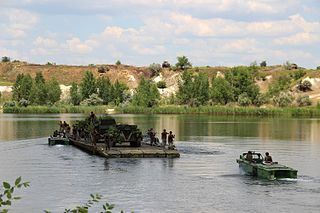
Military engineering is loosely defined as the art, science, and practice of designing and building military works and maintaining lines of military transport and military communications. Military engineers are also responsible for logistics behind military tactics. Modern military engineering differs from civil engineering. In the 20th and 21st centuries, military engineering also includes CBRN defense and other engineering disciplines such as mechanical and electrical engineering techniques.

Military recruit training, commonly known as basic training or boot camp, refers to the initial instruction of new military personnel. It is a physically and psychologically intensive process, which resocializes its subjects for the unique demands of military employment.
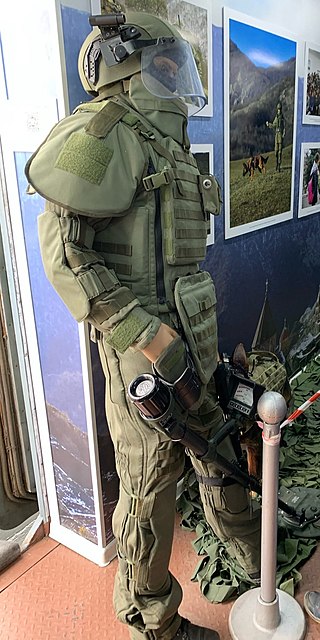
A sapper, also called a combat engineer, is a combatant or soldier who performs a variety of military engineering duties, such as breaching fortifications, demolitions, bridge-building, laying or clearing minefields, preparing field defenses, and road and airfield construction and repair.
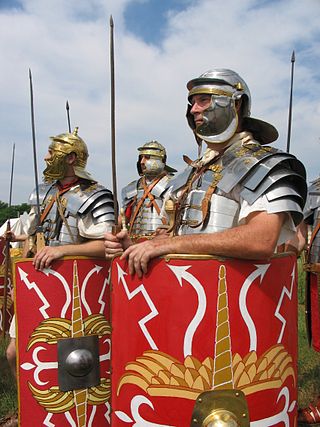
The Roman legionary was a citizen soldier of the Roman army. These soldiers would conquer and defend the territories of ancient Rome during the late Republic and Principate eras, alongside auxiliary and cavalry detachments. At its height, Roman legionaries were viewed as the foremost fighting force in the Roman world, with commentators such as Vegetius praising their fighting effectiveness centuries after the classical Roman legionary disappeared.
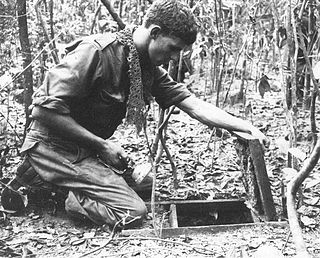
The tunnel rats were American, Australian, New Zealand, and South Vietnamese soldiers who performed underground search and destroy missions during the Vietnam War.

Camp Hale was a U.S. Army training facility in the western United States, constructed in 1942 for what became the 10th Mountain Division. Located in central Colorado between Red Cliff and Leadville in the Eagle River Valley at an elevation of 9,238 feet (2,815 m), it was named for General Irving Hale. Onslow S. Rolfe, who had developed mountain warfare techniques as commander of the 87th Mountain Infantry Regiment, was selected to command Camp Hale.

Fort Jackson is a United States Army installation, which TRADOC operates on for Basic Combat Training (BCT), and is located within the city of Columbia, South Carolina. This installation is named for Andrew Jackson, a United States Army general and the seventh president of the United States (1829–1837) who was born in the border region of North and South Carolina.

A combat medic is responsible for providing emergency medical treatment at a point of wounding in a combat or training environment, as well as primary care and health protection and evacuation from a point of injury or illness. Additionally, medics may also be responsible for the creation, oversight, and execution of long-term patient care plans in consultation with or in the absence of a readily available doctor or advanced practice provider. Combat medics may be used in hospitals and clinics, where they have the opportunity to work in additional roles, such as operating medical and laboratory equipment and performing and assisting with procedures.

A signifer was a standard bearer of the Roman legions. He carried a signum (standard) for a cohort or century. Each century had a signifer so there were 60 in a legion. Within each cohort, the first century's signifer would be the senior one. The -fer in signifer comes from ferre, the Latin for 'to bear' or 'to carry'.
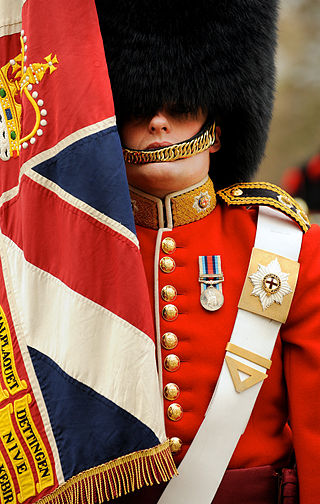
A standard-bearer, also known as a colour-bearer or flag-bearer, is a person who bears an emblem known as a standard or military colours, i.e. either a type of flag or an inflexible but mobile image, which is used as a formal, visual symbol of a state, prince, military unit, etc. This can either be an occasional duty, often seen as an honour, or a permanent charge ; the second type has even led in certain cases to this task being reflected in official rank titles such as Chorąży, Ensign, Cornet, Fähnrich and Alferes/Alférez.
The military of ancient Rome was one of largest pre-modern professional standing armies that ever existed. At its height, protecting over 7,000 kilometers of border and consisting of over 400,000 legionaries and auxiliaries, the army was the most important institution in the Roman world. According to the Roman historian Livy, the military was a key element in the rise of Rome over "above seven hundred years" from a small settlement in Latium to the capital of an empire governing a wide region around the shores of the Mediterranean, or, as the Romans themselves said, mare nostrum, "our sea". Livy asserts:
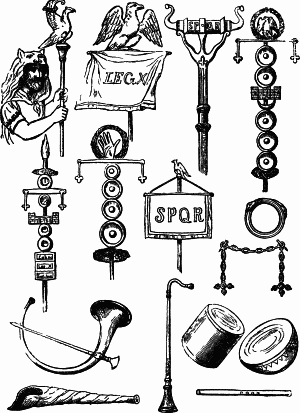
Roman military personal equipment was produced in large numbers to established patterns, and used in an established manner. These standard patterns and uses were called the res militaris or disciplina. Its regular practice during the Roman Republic and Roman Empire led to military excellence and victory. The equipment gave the Romans a very distinct advantage over their barbarian enemies, especially so in the case of armour. This does not mean that every Roman soldier had better equipment than the richer men among his opponents. Roman equipment was not of a better quality than that used by the majority of Rome's adversaries. Other historians and writers have stated that the Roman army's need for large quantities of "mass produced" equipment after the so-called "Marian Reforms" and subsequent civil wars led to a decline in the quality of Roman equipment compared to the earlier Republican era:
The production of these kinds of helmets of Italic tradition decreased in quality because of the demands of equipping huge armies, especially during civil wars...The bad quality of these helmets is recorded by the sources describing how sometimes they were covered by wicker protections, like those of Pompeius' soldiers during the siege of Dyrrachium in 48 BC, which were seriously damaged by the missiles of Caesar's slingers and archers.
It would appear that armour quality suffered at times when mass production methods were being used to meet the increased demand which was very high the reduced size cuirasses would also have been quicker and cheaper to produce, which may have been a deciding factor at times of financial crisis, or where large bodies of men were required to be mobilized at short notice, possibly reflected in the poor-quality, mass produced iron helmets of Imperial Italic type C, as found, for example, in the River Po at Cremona, associated with the Civil Wars of AD 69 AD; Russell Robinson, 1975, 67
Up until then, the quality of helmets had been fairly consistent and the bowls well decorated and finished. However, after the Marian Reforms, with their resultant influx of the poorest citizens into the army, there must inevitably have been a massive demand for cheaper equipment, a situation which can only have been exacerbated by the Civil Wars...
Romanmilitary engineering was of a scale and frequency far beyond that of its contemporaries. Indeed, military engineering was in many ways endemic in Roman military culture, as demonstrated by each Roman legionary having as part of his equipment a shovel, alongside his gladius (sword) and pila (spears).
The immunes were ancient Roman soldiers who possessed specialized skills. They were exempt from the more tedious and dangerous tasks other soldiers were required to do, such as ditch digging and rampart patrol.

The Corvo is a bladed weapon typically used in Chile. It is a double-edged knife with a curved blade of approximately 12 in (300 mm). Initially a tool similar to a grape hook, it was widely used in combat during the War of the Pacific. It was not standard issue, but rather a personal weapon or tool that the soldiers brought with them from home.

United States Army Basic Combat Training (BCT) is the recruit training program of the United States Army, for service in the U.S. Army, U.S. Army Reserve, or the Army National Guard.
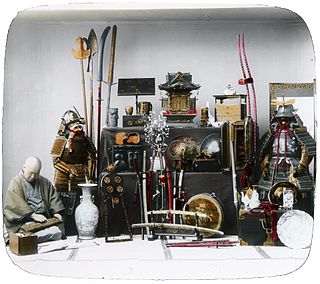
Major innovations in the history of weapons have included the adoption of different materials – from stone and wood to different metals, and modern synthetic materials such as plastics – and the developments of different weapon styles either to fit the terrain or to support or counteract different battlefield tactics and defensive equipment.















